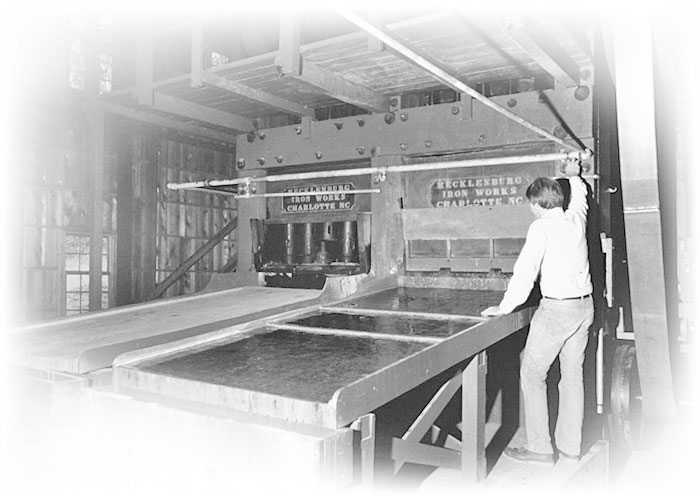#84 Reed Gold Mine Ten-Stamp Mill
1895
Typical late 19th-century western-US stamp mill
The first authenticated discovery of gold occurred on the Cabarrus County farm of John Reed in 1799, sparking the nation's first gold rush. During its peak years, more than a million dollars of gold was recovered a year, making North Carolina a leader in gold production until 1848. This mill, built by the Mecklenburg Iron Works of Charlotte, North Carolina, is original except for the timber work. Two groups of five 750-pound stamps with 5- to 7-inch lift, rose and fell thirty-five times a minute to yield a finely crushed ore. It is typical of those used in the late nineteenth century, not only in this state but in the western regions as well.
Comments from Visitors/Members 1992 Survey by Kenneth A. Beatty: Site is staffed throughout the year. Indoor museum, guided underground tours and separate building housing the ten-stamp mill are available at this facility. Site is well maintained and has private parking, restroom facilities and good access. Many school tours are conducted at the facility.

Landmark Location
Reed Gold Mine State Historic Site
9621 Reed Mine Road
Midland, NC 28107
Owner or plaque location, if different than above
NC Dept of Cultural Resources
Visiting Info
For info go to the Reed Gold Mine site or phone (704) 721-4653
Related Links
Reed Gold Mine website http://www.nchistoricsites.org/reed
Ceremony Notes
Designated by the Piedmont-Carolina Section, April 1983
Plaque Location, if specific
In same building with mill
